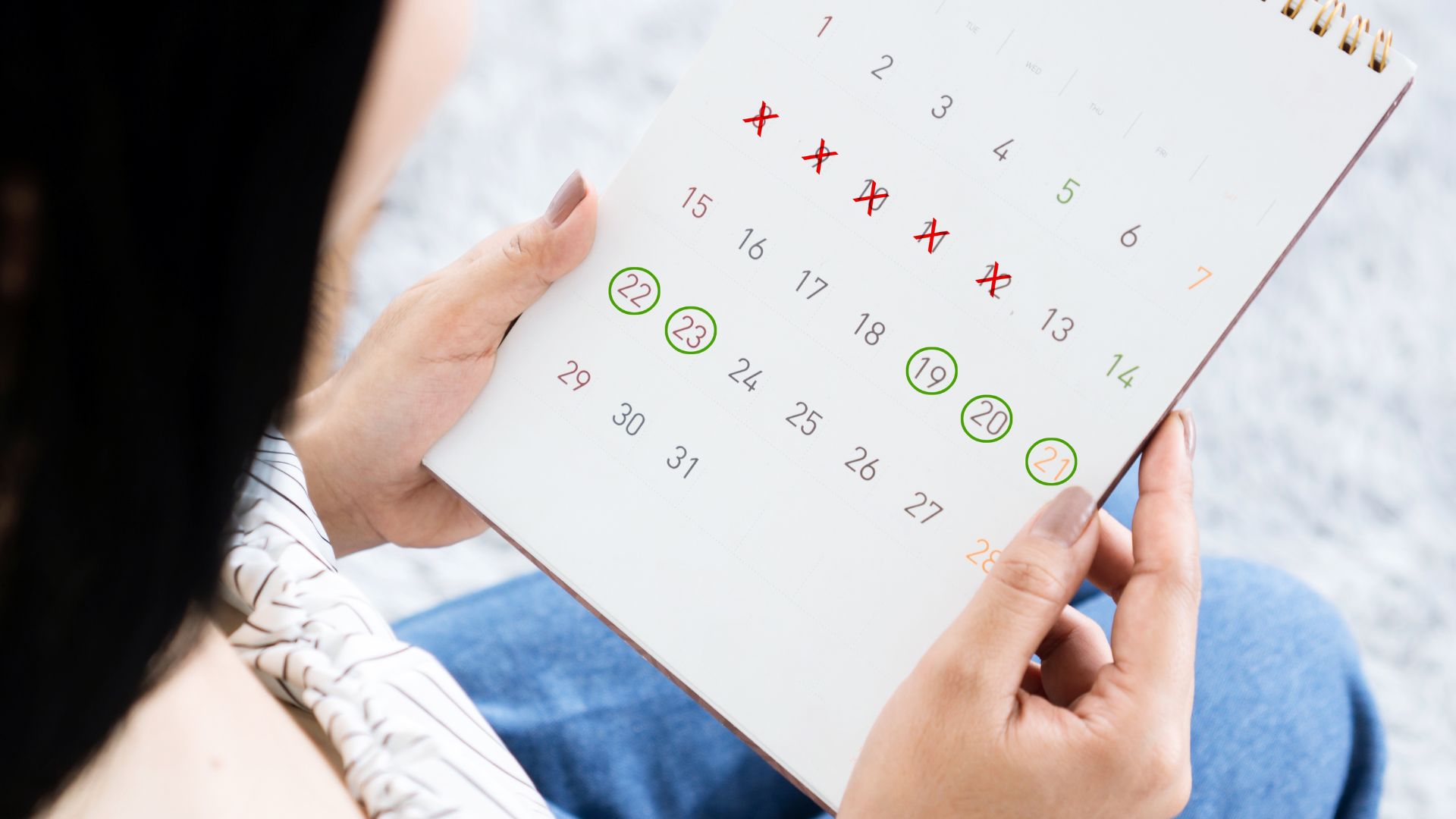
Bleeding between periods can be unnerving, although most people who menstruate experience this at some point in their lives.
"Intermenstrual bleeding" broadly refers to bleeding from the vagina that occurs between a person's expected menstrual periods, and it includes "spotting," which refers to relatively light blood loss. Intermenstrual bleeding is different from having irregular periods, where the length of the menstrual cycle fluctuates such that one's period doesn't come at regular intervals.
But why does spotting happen between periods? And is it ever something to worry about?
The short answer is that spotting can happen for harmless reasons, but at times, it may be linked to more serious underlying conditions. To know why spotting happens, it helps to understand the mechanisms that regulate menstrual bleeding.
Related: Menstrual cycle linked to structural changes across whole brain
Menstruation is the process of shedding the endometrium, the layered tissue that lines the inside of the uterus, according to the medical resource StatPearls. Prior to menstruation, one layer of the endometrium, called the stratum functionalis, thickens to prepare for the potential implantation of a fertilized egg. If pregnancy does not occur, this layer breaks down, leading to the bleeding and "sloughing" of tissue tied to a period, and the cycle starts again.
Ever wonder why some people build muscle more easily than others or why freckles come out in the sun? Send us your questions about how the human body works to community@livescience.com with the subject line "Health Desk Q," and you may see your question answered on the website!
This thickening and shedding of the endometrium is controlled by reproductive hormones, such as estrogen and progesterone; blood clotting factors; and the constriction of the uterine and ovarian arteries. In a typical menstrual cycle, bleeding happens every 24 to 38 days and lasts two to seven days, StatPearls states.
Causes of bleeding between periods
Some reasons for bleeding between periods are relatively harmless, such as hormonal changes brought on by puberty, Dr. Amanda Black, a professor of obstetrics and gynecology at the University of Ottawa in Canada, told Live Science by email. Shifts in a person's hormone levels in the years before menopause can also spur bleeding between periods, StatPearls notes.
That's because hormonal fluctuations can cause the endometrium to thicken and partially shed at various times throughout the menstrual cycle.
Intermenstrual bleeding can also stem from hormonal contraception, including birth control pills with only progesterone and "combined" pills with both progesterone and estrogen, Dr. Keemi Ereme, an obstetrician-gynecologist and complex family planning fellow at the University of Illinois Hospital in Chicago, told Live Science. For example, the transition onto hormonal birth control can cause breakthrough bleeding — another term for spotting — as the body adjusts to the new influx of hormones. Spotting can also happen when users miss a pill in their regimen.
"However, the bleeding caused by [oral contraceptives] is usually not harmful," Ereme said.
But bleeding between periods can also stem from medical conditions, such as polycystic ovary syndrome (PCOS), a hormonal disorder where fluid-filled cysts swell in the ovaries, and endometriosis, in which endometrium-like tissue grows outside the uterus, Black said. Spotting is also tied to endometrial hyperplasia (an abnormal and excessive thickening of the endometrium), uterine cancer and cervical cancer, she said.
Noncancerous growths, such as polyps and uterine fibroids, can also interfere with the normal thickening and shedding of the endometrium and cause intermenstrual bleeding, Ereme added. Spotting can also stem from bleeding disorders, such as Von Willebrand disease, a hereditary condition that disrupts blood clotting. And spotting can occur due to infections of the reproductive tract, including the bacterial sexually transmitted infections (STIs) gonorrhea and chlamydia, Ereme said.
Low levels of thyroid hormones "essentially stops ovulation or decreases the frequency of ovulation," Ereme added. Without ovulation, the body doesn't produce enough progesterone to properly stabilize the endometrium as it thickens, leading to irregular and heavy shedding.
Although spotting is common and often not a cause for concern, it's a good idea to seek medical guidance from a health care professional if you are experiencing bleeding between periods, Black and Ereme both told Live Science.
This article is for informational purposes only and is not meant to offer medical advice.







